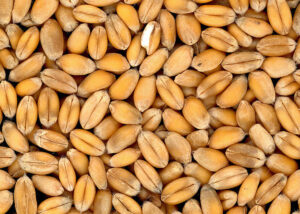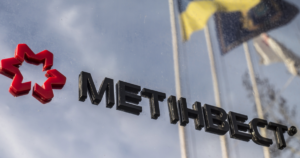
Serbia has decided to repatriate all its gold reserves stored abroad and transfer them to the territory of the country. This is reported by Bloomberg agency, citing sources in financial circles. The total value of assets is estimated at about 6 billion dollars at current market prices.
According to the agency, Serbia will be the first country in Eastern Europe to decide on the full return of physical gold reserves from such traditional depositories as Great Britain, Switzerland and the United States.
The decision comes amid increasing geopolitical instability, inflationary pressures and uncertainty in global markets. Serbian authorities view the physical placement of gold domestically as an additional guarantee of liquidity and sovereignty, especially in case of emergency economic or currency shocks.
As of mid-2025, Serbia’s foreign exchange reserves total approximately EUR 25.3 billion, of which:
– more than 40 tons of gold (equivalent to about EUR 2.7 billion),
– the rest are foreign currency assets, including euros, dollars and SDRs (IMF Special Drawing Rights).
Traditionally, a significant portion of Serbian gold reserves has been held at the Bank of England in London, one of the world’s largest repositories of precious metals. This bank serves more than 30 nations, including the Netherlands, Germany, Hungary and others, which have also undertaken partial gold refunds over the years.
The reasons for the return are explained by several key considerations:
– Guarantee of physical control – in the face of possible international sanctions, geopolitical risks or asset blockages.
– Precedents for blockages – including the UK’s refusal to transfer gold to Venezuela, which heightened anxiety among developing countries.
– Strengthening macro-financial resilience – physical gold domestically is seen as a tool to stabilize national currencies in the event of crises.
Gold repatriation is a global trend in recent years. Such steps have been taken by:
– Germany – returned more than 300 tons of gold from Paris and New York;
– Hungary – tripled its gold reserves and transported them to the country;
– Turkey – repatriated the entire volume of gold from the US in 2018.
Serbia’s decision to return gold to its territory is not only a financially logical move, but also a political signal reflecting the growing role of sovereignty and autonomy in the management of state assets. Against the backdrop of global fragmentation of economic blocs and sanctions risks, even small economies are seeking to minimize external dependence, especially in matters related to key reserves.
https://t.me/relocationrs/1208

As of July 25, farmers harvested 10.347 million tons of early grains and legumes from an area of 3.236 million hectares, compared to 7.226 million tons from 2.355 million hectares a week earlier, according to the Ministry of Economy, Environment, and Agriculture.
The ministry noted that farmers have already harvested 29% of the area sown with grain and leguminous crops.
According to the Ministry of Economy, 7.088 million tons of wheat have been harvested in Ukraine so far (compared to 4.671 million tons a week earlier) from 2.178 million hectares (1.504 million hectares), barley 2.792 million tons (2.182 million tons) from an area of 838,700 hectares (660,600 hectares), peas – 412,400 tons (362,900 tons) from 190,900 hectares (170,800 hectares). Other cereals and legumes were harvested in the amount of 54.2 thousand tons from an area of 28.5 thousand hectares.
The leaders in grain and legume harvesting are the Odesa region, which harvested 2.5 million tons from 884,500 hectares, Kirovohrad – 1.53 million tons from 368,700 hectares, and Mykolaiv – 1.387 million tons from 577,300 hectares.
Rapeseed has been harvested at 1.04 million tons (614,100 tons) from 535,000 hectares (360,300 hectares).
As reported, as of July 26, 2024, Ukraine had harvested 22.324 million tons of new crops, including 19 million tons of grains and over 3 million tons of oilseeds. At the same time, 14.7 million tons of wheat were harvested from 3.5 thousand hectares, 3.8 million tons of barley from 1.02 thousand hectares, 416,300 tons of peas from 189,800 hectares, 3 million tons of rapeseed from 1,086 hectares, 0.3 thousand tons of soybeans from 0.2 thousand hectares, and 80 tons of millet from 50 hectares.

Metinvest Group, together with the administration and the Defense Council of Kryvyi Rih, has focused its efforts on major projects to renovate the city’s healthcare facilities, according to a press release citing Igor Toniev, CEO of United Mining and Processing Plant (UMPP).
“The largest project currently being implemented by Metinvest is the overhaul of the buildings of the polyclinic and X-ray department of Kryvyi Rih City Hospital No. 3. The company has allocated almost UAH 125 million for this large-scale work. This month, the overhaul of the main inpatient building of City Hospital No. 7 is scheduled to begin. Metinvest is allocating UAH 61.6 million for the development of project documentation, general construction, roofing, and facade work,” said the top manager.
At a meeting between Metinvest Group management and the head of the City Defense Council, Oleksandr Vilkul, it was noted that the project to overhaul the third hospital began in 2023, with funding from both Kryvyi Rih and Metinvest. Equipment for X-rays and fluorography was purchased with funds from the local budget. Also, the second and third floors of the polyclinic will be renovated at the expense of the city. As part of the project to overhaul the polyclinic of the third hospital, the group undertook the construction work and modernization of the first floor, the X-ray department, and the construction of a shelter for 350 people.
Vilkul stated that the city is actively implementing a large number of projects in the field of medicine. In particular, there is one large-scale project that is starting – the reconstruction of Hospital No. 7, which is the main cluster institution for the northern part of the district, Zhovti Vody, and the surrounding villages. The project involves the renovation of the main inpatient department. The project is being financed from three sources: the city budget, a grant won in a competition organized by the Ministry of Infrastructure (this will be co-financed by the European Investment Bank through the Ministry of Infrastructure), and funds from Metinvest.
“By joining forces, we are implementing a medical project that is important for the community,” Vilkul stated.
Metinvest is a vertically integrated group of mining and metallurgical companies. Its enterprises are located in Ukraine, in the Donetsk, Luhansk, Zaporizhia, and Dnipropetrovsk regions, as well as in the European Union, the United Kingdom, and the United States. The main shareholders of the holding company are SCM Group (71.24%) and Smart Holding (23.76%). Metinvest Holding LLC is the managing company of the Metinvest Group.

Since 2021, 8,644 agricultural companies have been registered in Ukraine, while 3,416 companies have been closed, according to the Opendatabot service.
According to the resource, agricultural companies were most actively registered in 2021, when 2,678 companies appeared. With the start of the full-scale invasion, the number of registrations dropped to 1,558. However, starting in 2023, the agricultural sector revived: 1,697 new companies appeared in a year. Between January and July 2025, 869 new agricultural enterprises were registered.
Analyzing data on the closure of agricultural enterprises, analysts noted that the largest number of closures occurred in 2021 (1,070 companies) and in 2024 (685). This year, 536 agricultural companies decided to cease operations.
The largest number of new agricultural companies was recorded in the Odesa region — 612. Next are Kyiv (600), Lviv region (597), Vinnytsia (591), and Dnipropetrovsk (535). The fewest were in the frontline regions of Luhansk (40), Donetsk (101), and Zaporizhzhia (147). However, agribusinesses are not very active in Chernivtsi (120) and Zakarpattia (171) regions either.
The largest number of agricultural companies closed in the Odesa region — 606. There were also many closures in the Dnipropetrovsk (225), Khmelnytskyi (201), Kyiv (199), and Mykolaiv (191) regions. The fewest closures were in Luhansk (21), Donetsk (49), Ivano-Frankivsk (49), and Kyiv (55).
Analysts noted that 1,738 agricultural companies relocated to other regions during this period. Of these, 346 agribusinesses moved to western regions of Ukraine over the past five years. Almost half of the relocators who decided to move west chose Lviv region as their new region for doing business — 166 companies. Rivne (54 companies), Volyn (39), Khmelnytskyi (30), and Zakarpattia (19) regions are also popular among businesses changing their registration.
In addition, a number of agricultural companies that have opened during this time are steadily increasing their wealth. The top five newcomers actively expanding their operations include Farmzaat Ukraine, whose revenue grew 3.3 times in 2024 to UAH 770 million; Niva-Plus, which earned 1.5 times more than in 2023, at UAH 530 million; Agroprotekhnika – 2.7 times, to UAH 392 million, Krasnopavlivsky KHP – 1.3 times, to UAH 308 million, and Agrofirma Malynivska – 2.8 times, to UAH 299 million.

More than 8 thousand agricultural companies have been opened in Ukraine since 2021, according to the Unified State Register. The peak occurred a year before the full-scale invasion, when 2678 agribusinesses opened in a year. At the same time, another 3.4 thousand companies ceased operations from 2021 to 2025. Most often, agribusinesses are started in Odesa, Kyiv, and Lviv regions. More than 346 companies relocated to the western regions during this time.
8,644 agricultural companies have been registered in Ukraine since 2021. The most active year was 2021, when 2,678 companies were registered. With the start of the full-scale invasion, the number of registrations dropped to 1,558. However, in 2023, the agricultural sector revived: 1,697 new companies were registered in a year. 869 new agricultural enterprises have already been registered this year.
At the same time, 3,416 agricultural enterprises closed in Ukraine from 2021 to 2025. The largest number of closures occurred in 2021 (1,070 companies) and in 2024 (685). This year, 536 agricultural companies decided to cease their operations.
The largest number of new agricultural companies was recorded in Odesa region – 612. This is followed by Kyiv (600), Lviv region (597), Vinnytsia (591), and Dnipropetrovs’k region (535). The lowest number is in the frontline Luhansk region (40), Donetsk (101), and Zaporizhzhia (147). However, agrarians in Chernivtsi (120) and Zakarpattia (171) regions are not very active in opening their businesses.
Most agricultural companies closed in Odesa region – 606. There are also a lot of closures in Dnipropetrovska (225), Khmelnytska (201), Kyivska (199), and Mykolaivska (191) regions. The lowest number of closures was in Luhansk (21), Donetsk (49), Ivano-Frankivsk (49), and Kyiv (55).
1738 agricultural companies relocated to other regions during this period. Of these, 346 agribusinesses moved to the western regions of Ukraine over the past 5 years. Almost half of the relocators who decided to move to the west chose Lviv region as a new business location – 166 companies. Rivne region (54 companies), Volyn (39), Khmelnytsky (30), and Zakarpattia (19) are also in demand among businesses that change their residence.
Some agricultural companies that have opened during this time are steadily increasing their fortunes.
● Farmzaat Ukraine – in 2024, the company’s revenue grew 3.3 times and reached UAH 770 million
Niva-Plus – last year the company earned UAH 530 million, which is one and a half times more than in 2023.
● Agropromtekhnika – revenue grew 2.7 times year-on-year to UAH 392 million
Krasnopavlivskyi CPP – UAH 308 million, up 1.3 times compared to 2023
● Malynivska Agrofirm – the company’s revenue grew 2.8 times over the year to UAH 299 million
https://opendatabot.ua/analytics/agro-in-war




In response to ticket shortages, Ukrzaliznytsia is rolling out a trial version of the “Dія.Підпис” verification system, which already works for international flights, for five popular domestic trains.
“We continue to use all means to reduce the number of possible abuses when purchasing train tickets. Therefore, from August 1, in order to buy or return tickets for certain domestic trains, passengers must verify their identity through ”Dія.Підпис,” the company said in a statement.
According to the statement, during the first stage of implementation, verification will be required for the following trains: No. 105/106 Odesa-Kyiv; No. 91/92 Lviv-Kyiv; No. 29/30 Kyiv-Uzhhorod; No. 12 Lviv-Odesa and No. 27/28 Kyiv-Chop.
Tickets for these flights will not be available at ticket offices.
The new rules will not apply to flights with special ticket reserves for military personnel.
Ukrzaliznytsia also noted that it is continuing to work on introducing authorization in the app via BankID.